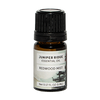
Original version printed in the 2015 Juniper Ridge published Zine “Interact.”
Conifers go by lots of names: evergreens, Pinophyta, pines—even Christmas trees. Whatever name you use, it isn’t hard to fall in love with them. They’re the tallest, oldest, and biggest category of plant in the world. The Coastal Redwoods of Northern California can grow close to four hundred feet tall, and some Bristlecone Pines of the Great Basin, still alive today, were already ancient when Rome was an empire.
 Why We Love Conifers
Why We Love Conifers
Here at Juniper Ridge, we are major conifer nerds. We really, really like these trees—not only because their incredible fragrance ingredients inform many of our scent profiles, but because of the huge role they’ve played in defining the natural history of the American West and forests around the world. Here’s a little background to help spark what we hope will be your own love affair with conifers:
A Brief Evolutionary History
All plants are classified as either vascular or nonvascular. Mosses, for example, are nonvascular plants, meaning they lack the specialized conductive tissue needed to transport nutrients. Nonvascular plants like these dominated the globe until about 425 million years ago, when the first vascular plants—ferns, horsetails, and others—made their way out of the oceans and onto land.
It would be another 300 million years before flowering plants, called angiosperms, emerged to create the world we know today. Between the two, and as late as the close of the Triassic, conifers—one of four evolutionary branches of Gymnosperms, or naked seeds—ruled a flowerless planet for over 150 million years.
While the shared evolutionary history of the different conifer species that survive today predates the Pacific Ocean as we know it, the geographic center of their evolutionary spread—the Pacific Rim—is still where more than half of all conifer species live.
Conifer Diversity
The entire conifer division contains approximately 8 families, 68 genera, and 630 living species, all of whom, like all Gymnosperms, lack pollinators and rely on wind to help them procreate. Existing types of conifer trees across the American West include Cedars, Douglas-firs, Cypresses, Firs, Junipers, Larches, Pines, Hemlocks, Redwoods, Spruces, and Yews.
Survival and Adaptation
These extraordinary trees have a plethora of incredible tools to help them survive harsh, nutrient-deplete environments, including making their own soil in high alpine climates and the ability to propagate with such efficiency that the forest itself seems to march to their personal beat, albeit on a scale quite slower than ours.
Conifers and Fragrance
At Juniper Ridge, we are constantly inspired and informed by the conifer. One tree can yield over a hundred different fragrance ingredients—consider roots, soil, fallen female cones, cambium, bark, sap, moss, mushrooms, heartwood, limbwood, needles, male cones, and pollen. Then process these single notes through our eight different, ancient methods of perfume production, and the formula combinations are endless.

Sustainable Harvesting
Using kind and sustainable practices that never harm the forest where these gracious and beautiful beings live has always been at the forefront of how we source. We partner with the US Forest Service, the National Parks Service, the California Department of Parks, local Tree Services, and private landowners to source our trees. For example, we collect slash piles that are the byproduct of fire suppression, or trees that have been deemed dangerous and removed from residential areas. Normally that plant material would be burned, adding carbon dioxide to the atmosphere, or sent to the landfill. Instead, we use steam distillation to turn these castoffs into pure essential oils, which are the sole source of fragrance in all our products. Interacting with conifers every day is truly an honor.

Experience Conifers in Every Breath
Enjoy our Mountain Wilderness Cologne or Cascade Forest Room Spray to get your own daily dose of the rich and ancient history of these most noble of trees. One bottle = 300 million years of natural history. Not bad, huh?






















